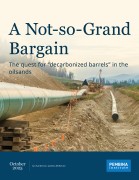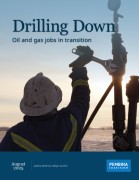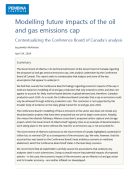The pace and scale of oilsands mining continues to increase in Alberta despite a poor understanding of the environmental liabilities: costs associated with the environmental impacts throughout the life of a mine. In Toxic Liability, the Pembina Institute has compiled the first public estimate of these liabilities.
Over their 30 to 50 years of operation, oilsands mines have had significant environmental impacts, including emissions of greenhouse gases and other pollutants, surface water withdrawals, contamination and disruption of groundwater, toxic seepage from tailings lakes into groundwater, habitat fragmentation and impacts on wildlife.
To mitigate some of these impacts, oilsands mining companies are required to reclaim the land that has been disturbed during the mining process. Companies budget to pay for reclamation, which is supposed to occur as a company develops a mine. The cleanup bill for mines is potentially immense.
The Government of Alberta requires all oilsands mine operators to post a security deposit to fund reclamation in the event an operator is unable or unwilling to pay for reclamation. However, because of the lack of transparency about the true costs of reclamation, the public doesn't know whether or not the current security deposits are adequate, and based on our findings — it looks like the securities collected are significantly inadequate, to the tune of $10 to $15 billion.










